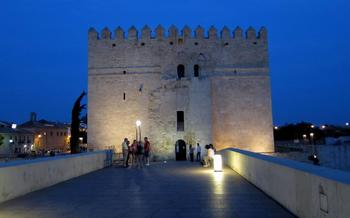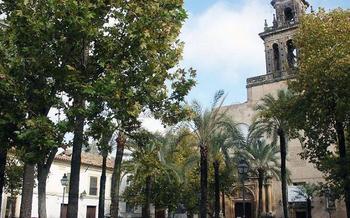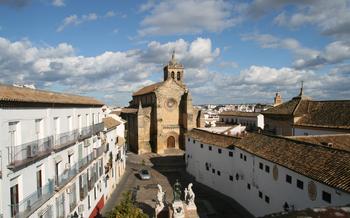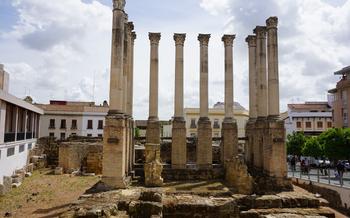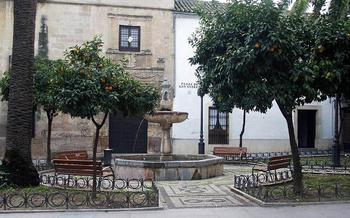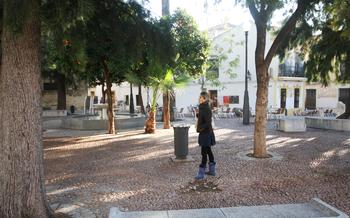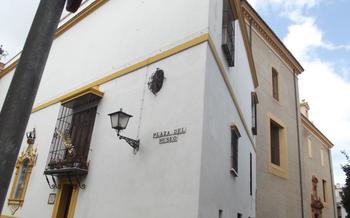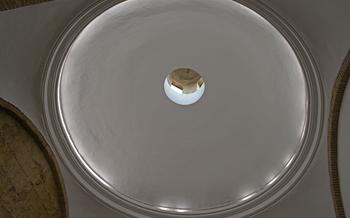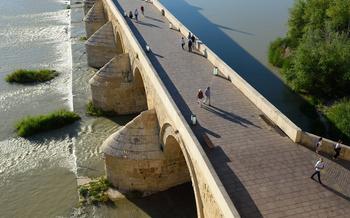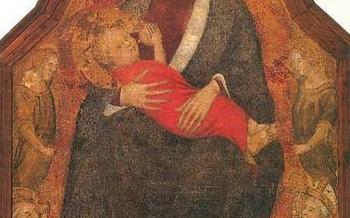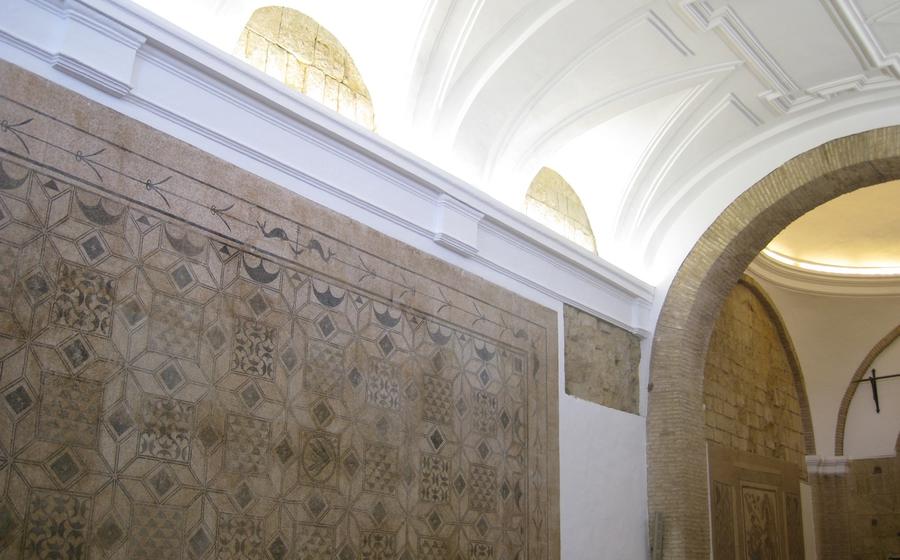
Sala de los Mosaicos
- Sala de los Mosaicos: An Overview
- Everyday Life Immortalized
- Geometric and Floral Patterns
- The Archaeological Museum of Córdoba: A Treasure Trove of History
- Tips for Visiting the Sala de los Mosaicos
- Guided Tours and Audio Guides
- Photography and Social Media
- Souvenirs and Mementos
- Local Cuisine and Gastronomic Delights
- Insider Tip: Unveiling the Hidden Gem
Sala de los Mosaicos: An Overview
Within the walls of the Archaeological Mosaicos. This remarkable collection of ancient mosaics offers a captivating glimpse into the artistic prowess, cultural heritage, and everyday life of the Roman Empire. Each mosaic, meticulously crafted by skilled artisans, serves as a vivid narrative of the past, providing insights into the customs, beliefs, and mythology of the Roman people.
The discovery of these mosaics is a testament to the enduring legacy of the Roman Empire. Unearthed during archaeological excavations in the city of Córdoba, these exquisite artworks were carefully preserved and restored, allowing us to marvel at their intricate details and vibrant colors even today. As we wander through the Sala de los Mosaicos, we are transported back in time, immersing ourselves in the rich tapestry of Roman culture and heritage.
Everyday Life Immortalized
The Sala de los Mosaicos is not just a showcase of mythological tales and geometric patterns; it also offers a glimpse into the mundane yet fascinating aspects of daily life in ancient Rome. Mosaics depicting domestic scenes, hunting expeditions, and agricultural activities provide a visual representation of Roman customs, clothing, and social interactions.
One particularly captivating mosaic portrays a bustling marketplace, complete with vendors selling their wares, customers haggling over prices, and even a sly pickpocket trying his luck. The intricate details of the mosaic capture the vibrant atmosphere of a Roman market, allowing visitors to imagine the sounds, smells, and conversations that would have filled the air.
Another mosaic depicts a hunting scene, showcasing the Romans' skill and prowess in the pursuit of game. Hunters armed with spears and nets can be seen pursuing deer, rabbits, and wild boar through a lush forest landscape. The mosaic offers insights into the importance of hunting as a source of food and recreation in ancient Rome.
Agricultural activities are also well-represented in the Sala de los Mosaicos. Mosaics depict farmers plowing fields, harvesting crops, and tending to their livestock. These scenes provide a glimpse into the agrarian economy of ancient Rome and the significance of agriculture in sustaining the empire's large population.
Through these mosaics, visitors can gain a deeper understanding of the daily lives of ordinary Romans, their customs, and their interactions with the world around them. Each mosaic is a snapshot of a moment in time, offering a glimpse into the diverse tapestry of Roman society.
Geometric and Floral Patterns
The Sala de los Mosaicos is not just renowned for its figurative and narrative compositions but also for its stunning array of geometric and floral patterns. These intricate designs showcase the artistic prowess and technical skill of Roman mosaicists. Using a variety of colored tesserae, they created mesmerizing patterns that adorned the floors and walls of Roman homes and public buildings.
The geometric mosaics often feature interlocking circles, squares, and hexagons, arranged in harmonious and symmetrical compositions. These patterns create a sense of visual order and rhythm, adding a touch of elegance and sophistication to the spaces they occupy.
Floral motifs are another prominent feature of the decorative mosaics in the Sala de los Mosaicos. Delicate petals, leaves, and vines are rendered in intricate detail, capturing the beauty and diversity of the natural world. These floral patterns bring a sense of freshness and vitality to the spaces they adorn, evoking the beauty of gardens and blooming meadows.
One particularly striking geometric mosaic in the Sala de los Mosaicos features a mesmerizing pattern of interlocking hexagons and squares. The hexagons are filled with alternating colors, creating a vibrant and dynamic effect. The squares, on the other hand, contain smaller geometric patterns, adding an extra layer of complexity and visual interest to the overall composition.
Anecdote:
During a visit to the Sala de los Mosaicos, I was particularly drawn to a mosaic depicting a delicate floral pattern. The intricate arrangement of petals and leaves seemed to dance across the floor, creating a sense of movement and fluidity. I couldn't help but imagine the skill and patience required to create such a masterpiece, and I marveled at the enduring beauty of this ancient art form.
The Archaeological Museum of Córdoba: A Treasure Trove of History
The Archaeological Museum of Córdoba, nestled in the heart of the historic city, is a captivating institution dedicated to showcasing the rich cultural heritage of Córdoba and the surrounding region. Founded in 1861, the museum has grown into a repository of invaluable artifacts, providing a comprehensive insight into the city's past.
The Sala de los Mosaicos forms the centerpiece of the Archaeological Museum, but the museum's exhibits extend far beyond these stunning mosaics. Other notable highlights include a collection of prehistoric and Iberian artifacts, demonstrating the region's ancient roots. Roman sculptures, pottery, and inscriptions offer a glimpse into the city's Roman heritage, while a section dedicated to Islamic art showcases the exquisite craftsmanship and legacy of Córdoba's Moorish period.
Beyond the Sala de los Mosaicos, the museum houses an impressive collection of medieval and modern artifacts, shedding light on the city's continuous evolution. Visitors can admire intricate jewelry, ceramics, and textiles, providing a tangible connection to Córdoba's diverse past.
The Archaeological Museum of Córdoba is not just a repository of artifacts; it is a storyteller, weaving together the threads of history to create a vibrant tapestry of Córdoba's rich cultural heritage. A visit to this institution is a journey through time, offering a profound understanding of the city's past and its enduring legacy.
Anecdote:
During a visit to the Archaeological Museum, I stumbled upon a group of schoolchildren gathered around a display of Roman coins. Their eyes sparkled with excitement as the museum guide explained the significance of these ancient relics. The guide brought history to life, describing how these coins were used in everyday transactions, linking the children to the lives of people who walked the streets of Córdoba centuries ago. Their laughter and animated questions filled the room, creating a moment of pure joy and wonder that encapsulated the magic of the museum's storytelling power.
Tips for Visiting the Sala de los Mosaicos
To fully appreciate the wonders of the Sala de los Mosaicos, careful planning is essential. While the museum is open year-round, the best time to visit is during the shoulder seasons (spring and fall) when the weather is pleasant, and crowds are smaller. The museum offers guided tours in various languages, providing expert insights and historical context. Alternatively, audio guides are available for self-guided exploration at your own pace.
When visiting the museum, remember that photography is permitted, but the use of flash is prohibited to preserve the delicate mosaics. Capture the stunning beauty of these ancient artworks through your lens, but be mindful of the restrictions.
To make the most of your visit, allow ample time to explore the Sala de los Mosaicos and other exhibits within the Archaeological Museum. Allocate at least an hour to fully immerse yourself in the rich history and artistry of Roman Córdoba. The museum also offers facilities such as a cloakroom, restrooms, and a small gift shop where you can purchase souvenirs and mementos to cherish your visit.
One unique aspect of visiting the Sala de los Mosaicos is the opportunity to witness ongoing restoration work. The museum's conservators diligently restore and preserve these priceless artifacts, offering visitors a glimpse into the intricate process of preserving our cultural heritage.
Guided Tours and Audio Guides
The Sala de los Mosaicos offers guided tours in various languages, allowing visitors to delve deeper into the history and significance of the mosaics. Expert guides provide insightful commentary, highlighting the artistic techniques, symbolism, and narratives depicted in each piece. These tours are an excellent way to gain a comprehensive understanding of the mosaics and their cultural context.
For those who prefer a self-guided experience, audio guides are available in multiple languages. These audio guides offer a wealth of information, describing the mosaics in detail and providing historical and cultural context. With an audio guide in hand, visitors can explore the Sala de los Mosaicos at their own pace, pausing to admire specific mosaics and learn more about their stories.
Anecdote: During a guided tour, our guide pointed out a seemingly inconspicuous mosaic depicting a hunting scene. He explained that this particular mosaic was discovered during the museum's renovation and had been hidden under layers of debris for centuries. Its rediscovery was a significant event, and it now holds a place of honor in the Sala de los Mosaicos.
Photography and Social Media
Capturing the Splendor of Ancient Art
In the Sala de los Mosaicos, photography enthusiasts have a field day. The vibrant colors, intricate designs, and historical significance of the mosaics make for stunning images. Remember to switch off your flash and use a tripod to avoid camera shake. Share your beautiful captures on social media using relevant hashtags to connect with fellow history buffs and art lovers worldwide. Don't forget to tag the museum's official accounts for a chance to be featured.
Anecdote:
During my visit, I noticed a group of young artists sketching the mosaics. They were so engrossed in their work, capturing the essence of these ancient masterpieces with a modern twist. It was a reminder that art transcends time and continues to inspire new generations.
Souvenirs and Mementos
The Sala de los Mosaicos offers a variety of souvenirs and mementos to commemorate your visit. These include postcards, posters, and replicas of some of the most iconic mosaics. You can also purchase books and other publications about the mosaics and the history of Córdoba.
For a truly unique souvenir, consider purchasing a piece of jewelry inspired by the mosaics. These pieces are often handcrafted by local artisans and feature intricate designs that evoke the beauty and symbolism of the ancient Roman art form.
When selecting a souvenir, take your time to browse the available options and choose something that truly resonates with you. Whether you opt for a postcard, a replica, or a piece of jewelry, your souvenir will serve as a lasting reminder of your visit to the Sala de los Mosaicos and the rich history of Córdoba.
Anecdote:
During my visit to the Sala de los Mosaicos, I was particularly drawn to a necklace featuring a small pendant depicting Dionysus, the Greek god of wine. The pendant was exquisitely crafted in silver and adorned with colorful gemstones that sparkled in the light. I couldn't resist purchasing it as a souvenir, and I've worn it ever since as a reminder of my unforgettable experience at the museum.
Local Cuisine and Gastronomic Delights
After immersing yourself in the ancient world of Roman mosaics, take a culinary journey through Córdoba's vibrant gastronomic scene. Just a short stroll from the Archaeological Museum, you'll find an array of restaurants and eateries tempting your palate with traditional dishes and local specialties.
Indulge in the iconic Salmorejo Cordobés, a chilled tomato soup blended with bread and olive oil, topped with diced ham and hard-boiled eggs. Savor the flavors of Flamenquín, a deep-fried roll of pork loin wrapped in Serrano ham, a local delicacy not to be missed.
For a taste of the sea, try the Fritura Cordobesa, a medley of fried fish and seafood, showcasing the region's proximity to the Atlantic Ocean. Complement your meal with a glass of Montilla-Moriles, a renowned local wine produced in the nearby countryside.
Don't forget to sample Pastel Cordobés, a traditional layered cake made with puff pastry, custard, and cinnamon, a sweet ending to your culinary exploration. As you savor these delectable dishes, you'll discover that Córdoba's gastronomy is as rich and diverse as its history and culture.
Insider Tip: Unveiling the Hidden Gem
Beyond the mesmerizing mosaics, the Sala de los Mosaicos holds a secret treasure—a hidden chamber known only to a few. Tucked away in a secluded corner, this chamber houses a breathtaking collection of smaller, yet equally exquisite mosaics.
These hidden gems offer a unique glimpse into the intricate artistry and craftsmanship of Roman mosaicists. From delicate floral patterns to intricate depictions of mythological scenes, each mosaic tells a captivating story. Visitors who stumble upon this secret chamber are often left in awe of its beauty and historical significance.
To discover this hidden gem, visitors should keep an eye out for a discreet door tucked away behind one of the larger mosaics. Once inside, they will be transported to a world of ancient art and history, where every mosaic whispers tales of a bygone era.
